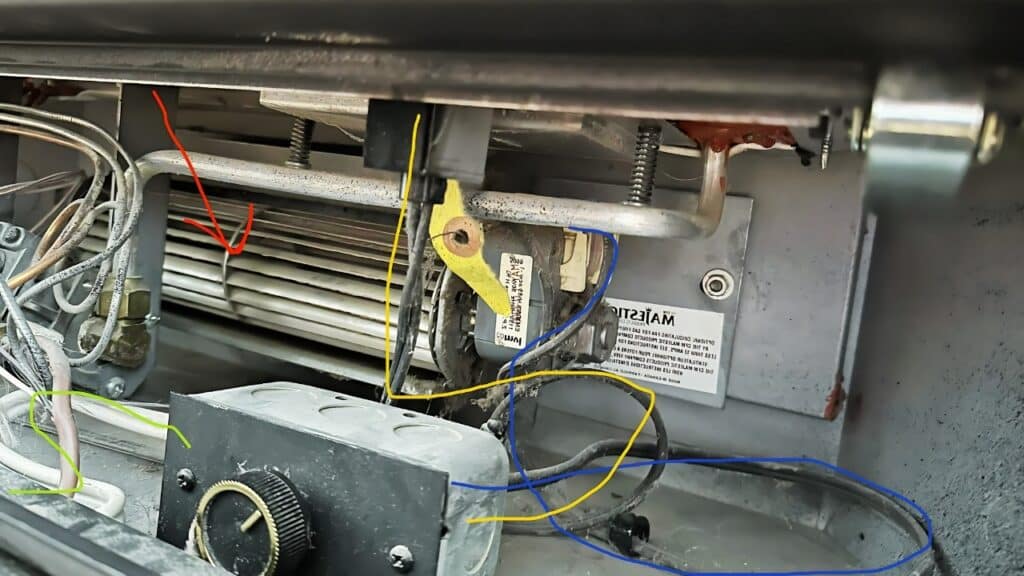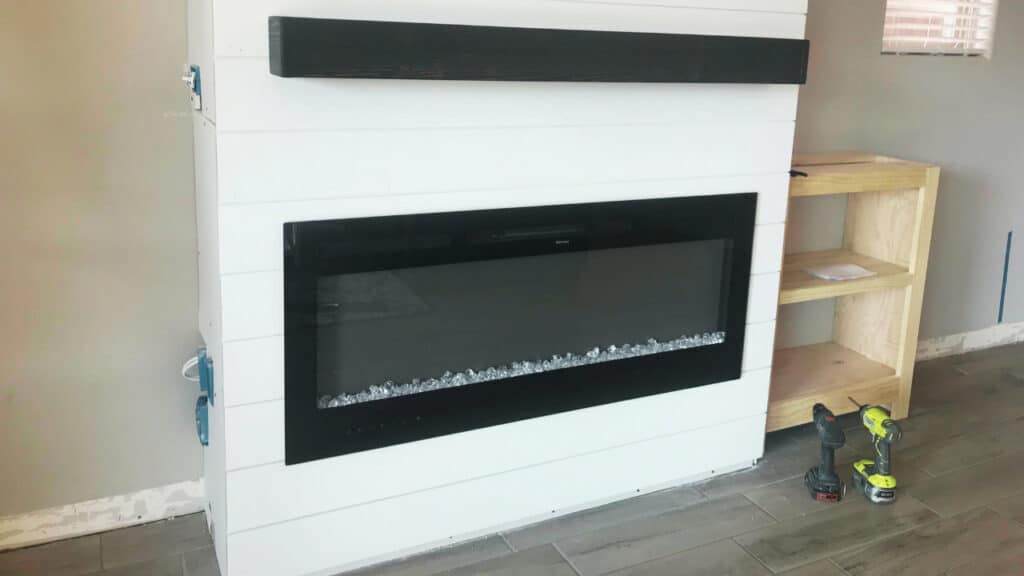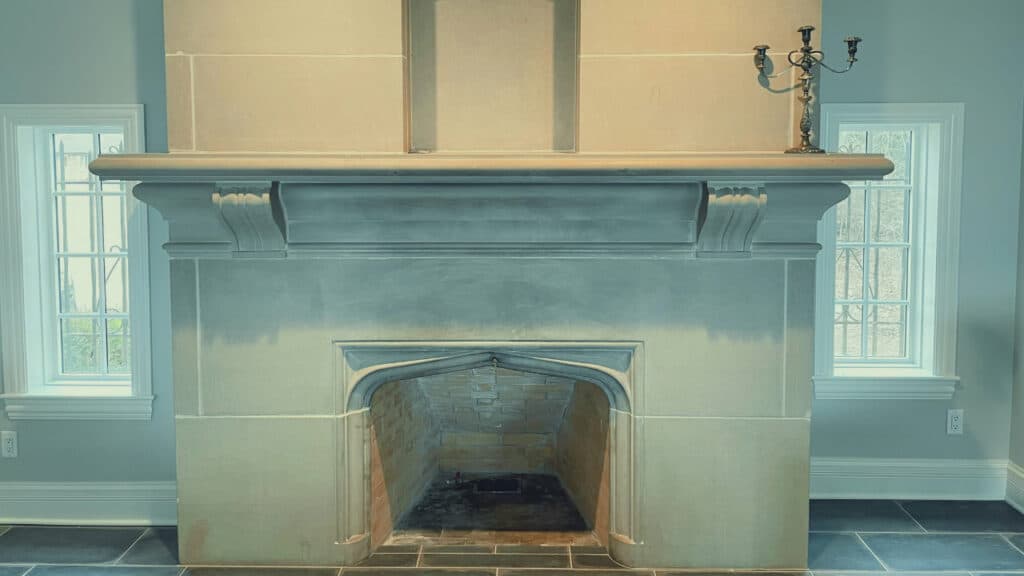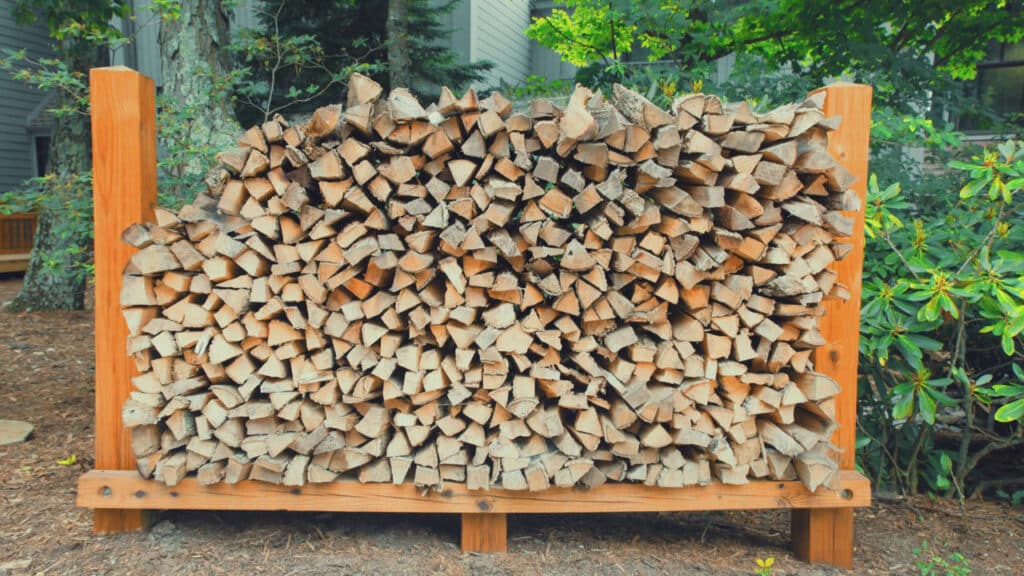A cozy evening by the fireplace can quickly turn into a chilly disappointment when the fan in your gas fireplace refuses to cooperate. The fan plays a crucial role in distributing warmth efficiently throughout the room, making its proper functioning essential for a comfortable and inviting atmosphere.
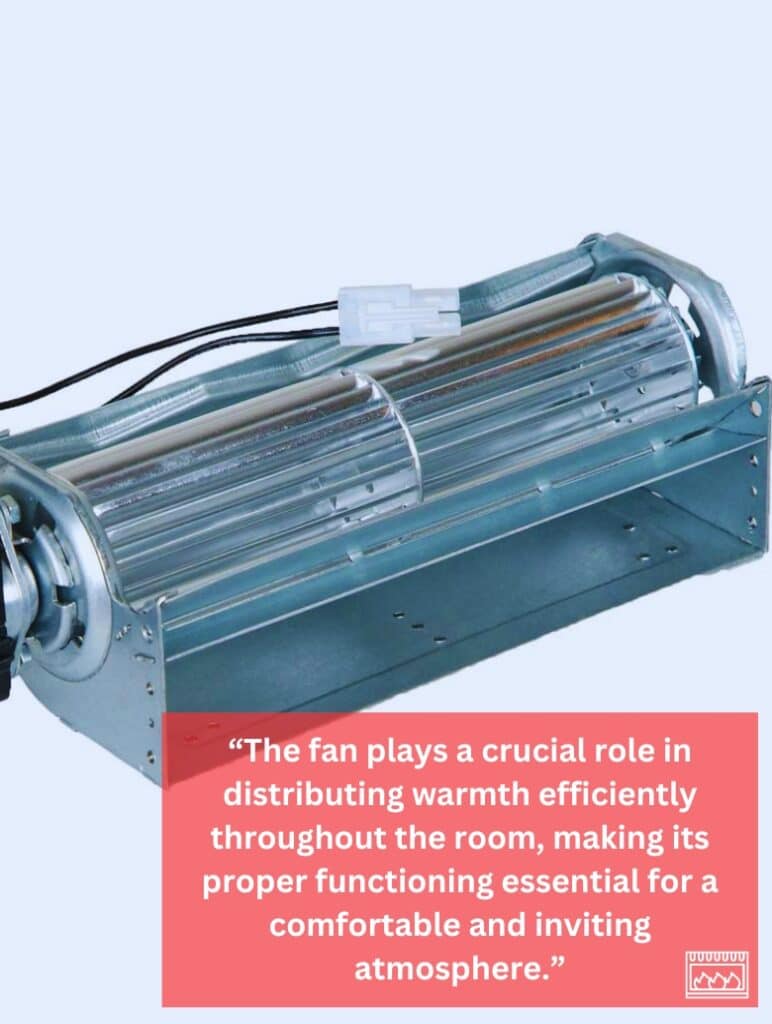
If you’ve found yourself in the predicament of a gas fireplace fan not working as it should, fear not – this article is here to guide you through the troubleshooting process.
In the following four steps, we’ll help you identify and resolve issues with your gas fireplace fan. From common glitches to more intricate problems, we aim to empower you with the knowledge needed to rekindle the warmth in your home.
Keep reading because your gas fireplace fan’s health depends on it!
——
Do You Need to Hire Chimney & Fireplace Expert?
Get free quotes from qualified experts near you. No commitment required!
——
How Does a Gas Fireplace Fan Work?
The primary function of the fan is to circulate air around the fireplace and project heated air into the living space, ensuring a more even and rapid distribution of warmth. This not only maximizes the fireplace’s heating capacity but also contributes to a quicker and more uniform rise in temperature within the room.
The fan system comprises several key components that work in tandem to achieve optimal performance. At the core is the fan or blower, responsible for propelling air and dispersing heat. An on/off switch or fan speed control is integrated into the system, allowing you to regulate the intensity of the airflow.
This control mechanism is pivotal in tailoring the heating experience to individual preferences and room requirements. Moreover, a heat sensor is a critical component that adds an element of automation to the system. This sensor detects the temperature of the fireplace and triggers the fans to start operating after a brief delay, typically 5 to 15 minutes post-startup.
It also ensures energy efficiency by shutting off the fans when the fireplace cools down, providing an intelligent and convenient way to manage the distribution of warmth in a gas fireplace system.
Is It Safe to Run a Gas Fireplace Without a Fan?
Running a gas fireplace without a fan is generally safe, as the fan primarily aids in distributing heat more efficiently and doesn’t impact combustion safety.

According to the Hearth, Patio & Barbecue Association, modern gas fireplaces are designed with built-in safety features, such as oxygen depletion sensors and flame failure devices, ensuring proper ventilation and shutting off gas if needed.
While a fan can enhance air circulation, its absence doesn’t compromise safety. However, it’s crucial to follow manufacturer guidelines, perform regular maintenance, and ensure proper ventilation for optimal safety and efficiency in gas fireplace operation.
Common Causes of Gas Fireplace Fan Failure
Some of the common causes of gas fireplace fan failure include but are not limited to:
Lack of Power Supply
Gas fireplaces operate independently of electricity, but if they feature a fan, they need an external power source for operation. Lack of power due to issues like a tripped circuit or a faulty outlet can lead to fan failure, hindering the efficient distribution of warmth generated by the fireplace.
Fan Motor Issues
Over time, motor wear, lubrication problems, or electrical issues can arise, causing the fan to malfunction. Regular maintenance and prompt identification of motor-related problems are essential to prevent interruptions in the fan’s performance.
Thermostat Problems
Malfunctioning thermostats can have trouble controlling the fan, causing it to operate incorrectly or not at all. Regularly check and calibrate your thermostat to ensure it accurately communicates with the fireplace, preventing disruptions and enhancing overall gas fireplace performance.
Dirty or Blocked Fan Blades
Accumulated dirt and debris on fan blades can impede proper function, leading to gas fireplace fan failure. Regular cleaning is crucial to prevent blockages and maintain optimal airflow.
A clean fan ensures efficient heat distribution, preventing issues such as gas fireplace shutdowns or irregular heating cycles.
Limit Switch Malfunction
The limit switch plays a crucial role in regulating the operation of a gas fireplace fan. It is responsible for monitoring and controlling the temperature, and a malfunctioning limit switch can lead to fan failure.
Troubleshooting Process of Gas Fireplace Fan Not Working

If your gas fireplace fan is not working, troubleshooting the issues is essential for a cozy and functional home. From ignition problems to gas supply issues, let’s see how a systematic troubleshooting process can help you identify and resolve the issue efficiently.
Step 1. Ensure that the Power Supply is Working
The first step is to verify the functionality of the power supply. Begin by resetting the system to eliminate any potential glitches. Confirm that both the pilot light and gas supply are operational, ensuring no issues are impeding the flow of gas.
Additionally, make sure there is a stable power supply at the source by examining electrical connections and outlets for any faults. Under normal circumstances, activating the system should prompt the fireplace and heat sensor to heat up. If this doesn’t occur, it indicates a potential power supply problem.
Addressing issues at this initial stage allows for a comprehensive troubleshooting process and sets the foundation for diagnosing and resolving more complex problems with the gas fireplace.
Step 2. Check the Heat Sensor
If your gas fireplace keeps going out, it’s crucial to examine the heat sensor, as it plays a key role in the proper functioning of the unit. Begin by turning on the fireplace and allowing 5 to 15 minutes for the heat sensor to activate. If the fan fails to turn on during this time, insufficient activation time might be the issue.
To further assess the heat sensor, remove it from the circuit by unplugging the wires and using a jumper wire to complete the circuit. Power the system back up and observe if the fan operates without the heat sensor. If it does, then you’ll need to replace the heat sensor.
Step 3: Check the Fan Speed Control
For this step, remove the fan speed control from the circuit. This involves disconnecting it to isolate it from the system. Once separated, employ a jumper wire to bridge the gap and complete the circuit in its absence.
If the fireplace fan operates seamlessly with the jumper wire, the issue likely resides within the fan speed control. This suggests a malfunction or failure in the control unit. In such cases, it is advisable to replace the fan speed control to restore proper functionality to the gas fireplace.
This troubleshooting step helps pinpoint specific problems related to the fan speed control by systematically evaluating each component. This contributes to a comprehensive approach to resolving issues with the gas fireplace.
Step 4: Check the Fan
If the gas fireplace fan is still not operational, replacement may be necessary. Ensure the fan is free from debris and obstructions. Verify that there is power reaching the fan and that the control switch is functioning correctly.
If all else fails, consult the manufacturer’s manual for troubleshooting guidance or consider seeking professional assistance to replace the fan.
——
Do You Need to Hire Chimney & Fireplace Expert?
Get free quotes from qualified experts near you. No commitment required!
——
How Much Does it Cost to Replace a Gas Fireplace Fan?
The cost to replace a gas fireplace fan varies widely, ranging from $50 to $500 or more. If you’re handy and comfortable tinkering with your fireplace, DIY installation can save you a significant chunk of change. Expect to pay around $20 to $50 for basic tools and materials.
However, if DIY isn’t your forte, professional installation costs come into play. The average cost, including labor and materials, falls between $150 and $300, but it can be higher depending on your location, the complexity of the job, and any unforeseen issues.
You should also consider the following factors:
- Type of fan: Axial fans are generally more affordable than centrifugal fans, which are quieter and more powerful.
- Size and power: Larger fans with higher airflow capacities will naturally cost more.
- Features: Additional bells and whistles, such as thermostats, remote controls, and variable speed settings, can increase the price tag.
- Professional installation complexity: Installation costs might be higher if your fireplace has unique features or requires dismantling parts for access.
DIY vs. Professional Installation
DIY is the most budget-friendly option, but it requires some technical knowledge and comfort working with gas appliances. Before diving in, make sure you understand your fireplace’s specific model and have the right tools.
Conversely, hiring a qualified technician ensures the job is done safely and correctly, especially if you have a complex fireplace or limited DIY skills. However, expect to pay more for their expertise and labor.
Remember, before getting your hands dirty, always consult your fireplace’s manual or manufacturer’s recommendations for fan replacement and any safety precautions.
Maintenance Tips for Gas Fireplace Fans
Before we conclude, here are some maintenance tips for your gas fireplace fan.
Regular Cleaning and Maintenance
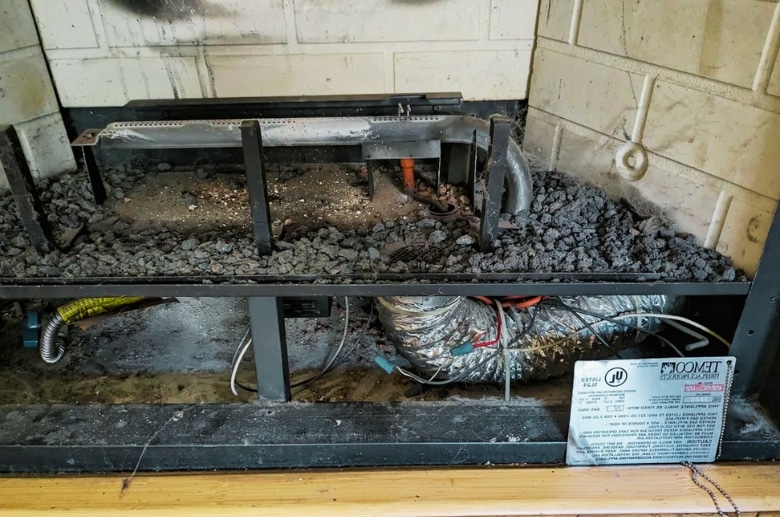
Gas fireplace fans require regular cleaning and maintenance to ensure optimal performance. Here are the step-by-step cleaning instructions to keep your fireplace fan in top condition.
Cleaning the Fan Blades:
- Remove the front grille. Consult your fireplace manual for specific instructions on how to detach the grille safely.
- Vacuum the inside of the fireplace unit. Use a soft brush attachment to remove loose dust and debris from around the fan housing.
- Clean the fan blades. Use a soft brush or microfiber cloth to gently remove dust and soot from the fan blades. For stubborn grime, dampen the cloth with a mild soap and water solution before wiping clean. Be careful not to bend or damage the blades.
- Clean the fan motor (optional). Some fireplace fans have removable motors. If yours does, you can carefully remove it and wipe it down with a damp cloth. Consult your manual for specific instructions.
General Maintenance:
- Lubricate the fan motor shaft (optional). Some manuals recommend applying a few drops of light machine oil to the motor shaft. Read your manual for specific instructions and lubrication type.
- Check the fan belt (if applicable). If your fireplace fan has a belt, ensure it’s not cracked or frayed and has the proper tension. Refer to your manual for guidance on adjusting belt tension.
- Reassemble the fireplace unit. Replace the front grille and plug the fireplace back in.
Regular Inspections
Conduct inspections at least once a year, focusing on key areas such as fan blades, motors, wiring, and the overall condition of the fan assembly. Address any issues promptly to ensure optimal performance and extend the lifespan of the equipment.
Avoiding Common Mistakes
To ensure the longevity of your gas fireplace fan, follow these best practices:
- Regularly clean the fan blades and surrounding areas.
- Check for any obstructions and schedule professional maintenance annually.
- Avoid overworking the fan and maintain a consistent cleaning routine to prevent common mistakes that may compromise its performance over time.
Conclusion
If you’re experiencing issues with your gas fireplace fan not working, there are a few steps you can take to troubleshoot the problem. Start by checking the power source and inspect the fan blades to see if there are any obstructions or damage. Next, examine the control switch to ensure it’s in good condition and functioning correctly.
Finally, assess the thermostat to ensure it’s set properly and communicating with the fan. By following these steps, you can systematically identify and address potential issues and resolve the problem efficiently.
Moreover, regular attention to maintenance safeguards against disruptions and enhances the overall longevity of the appliance.

